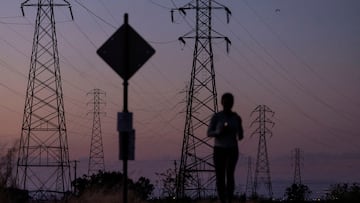This is what happened to Enron and the reason why the energy trading company collapsed
Few had “Enron comeback” on their 2024 bingo card. A look at the revival of the infamous name and its collapse in 2001.


Enron, a corporate name ubiquitous with fraud and collapse, has people talking after a social media account with the company’s name posted a video claiming that they were making a comeback. A community note under the video, posted earlier today, clarifies that the content falls under “parody.”
We're back. Can we talk? pic.twitter.com/9kt4g0Q84Z
— Enron (@Enron) December 2, 2024
Regardless, the video and the website created suggest that a major announcement under the Enron brand is coming. And from the little we have been able to investigate so far, extreme caution should be taken.
Connections to crypto?
If one goes to the LinkedIn profile for the newly relaunched Enron, a new picture emerges. On their profiles, the Enron logo is displayed, but the work history indicates they were employed by JupiterExchange. On the Enron website, they highlight a number of individuals they claim work for the company. Positions that are held by someone listed on the website, do not match those that are listed on LinkedIn. For instance, a woman by the name of Tina is listed as an Executive Assistant, while on LinkedIn, that role is filled by someone named Hamza. Tina’s picture showcased on the website is a stock photo. And ‘Tina’ is not alone. All of the images aside from one, are stock photos. One must ask, if Hamza is the company’s executive assistant, why doesn’t his name and photo appear?
The only case where a ‘real photo’ was used is Aaron‘s. However, the situation is worse and more complicated. Enron claims ’Aaron’ works in human resources. When I saved Aaron’s photo, the file name on my computer was “Donald P Stewart.” When I reverse-searched the image on Google, it linked to a LinkedIn blog post titled “The Restart Scheme Helps Marcus Turn His Life Around” published by a UK-based charity called People Plus. The organization has over 20,000 LinkedIn followers. The use of this image—Marcus/Donald/Aaron—is deeply concerning, as it suggests Enron might be using curated selfies to give visitors a sense of authenticity.
The task of creating trust where none exists
If one visits the website linked under the X account, they will find a press release where Enron claims it is relaunching “as a company dedicated to solving the global energy crisis.”
— Enron (@Enron) December 2, 2024
The press release also states that the new, “Enron will leverage cutting-edge technology, human ingenuity, and the spirit of adaptation to address the critical challenges of energy sustainability, accessibility, and affordability.”
Regardless of the vision behind this project, rebuilding trust under the Enron brand will be a significant challenge. The company has acknowledged this distrust in a small way on its new website. They have used the letters of the company name to convey what they stand for in this supposed ‘Enron 2.0′ era.
The “R” in Enron stands for “Repentant,” and the short blurb states that the company is “taking responsibility for past mistakes isn’t merely for show — it reflects our commitment to ethical practices moving forward.” They further express a desire not only to “repair relationships through transparency” but also to “build a lasting foundation of trust and sustainable growth.”
However, for a company with a history as notorious as Enron’s, words alone are unlikely to be enough. While the rebranding effort might aim to appeal to younger generations who are less familiar with the infamous collapse, overcoming the deep-seated skepticism surrounding the name may prove to be an insurmountable task. This task is made even more difficult by the use of stock photo images associated with ‘real employee’ testimonials.
The fall of Enron and its victims
Enron, once a major energy commodity and service provider, collapsed in 2001, becoming a notorious example of corporate mismanagement and fraud. Its failure was not the result of a single issue but a series of interconnected factors that led to one of the largest bankruptcies in U.S. history.
One major cause was fraudulent business and accounting practices designed to obscure the company’s financial problems. Enron created a network of Special Purpose Entities (SPEs) to hide debts and inflate profits, giving the illusion of financial health. These artificially inflated profits attracted investors, keeping the company afloat far longer than it would have otherwise.
Additionally, Enron used mark-to-market accounting, which allowed it to record projected earnings from long-term contracts as current income, leading the valuation of the company to be far higher than it actually was. These practices not only misled investors but also devastated employees, many of whom lost both their jobs and savings when Enron collapsed. The company had thousands of employees, many of whom had their retirement savings heavily invested in Enron stock. When the company collapsed, these funds were wiped out. Additionally, pensions and private retirement savings accounts, such as 401(k) plans, that had investments in Enron also suffered significant losses, leaving countless individuals and institutions in a terrible position.
Related stories
Long story short. Be careful putting any money near the project.
Get your game on! Whether you’re into NFL touchdowns, NBA buzzer-beaters, world-class soccer goals, or MLB home runs, our app has it all. Dive into live coverage, expert insights, breaking news, exclusive videos, and more – plus, stay updated on the latest in current affairs and entertainment. Download now for all-access coverage, right at your fingertips – anytime, anywhere.
Complete your personal details to comment